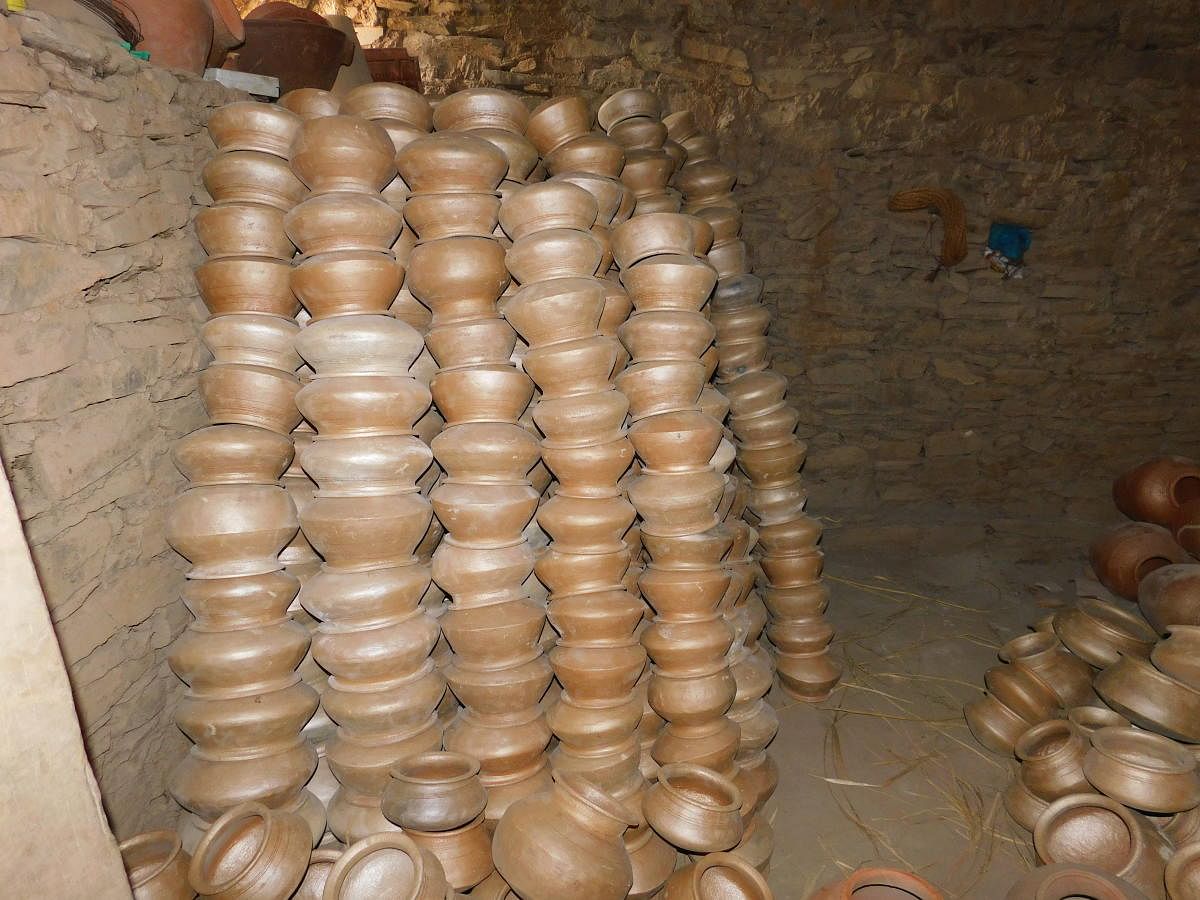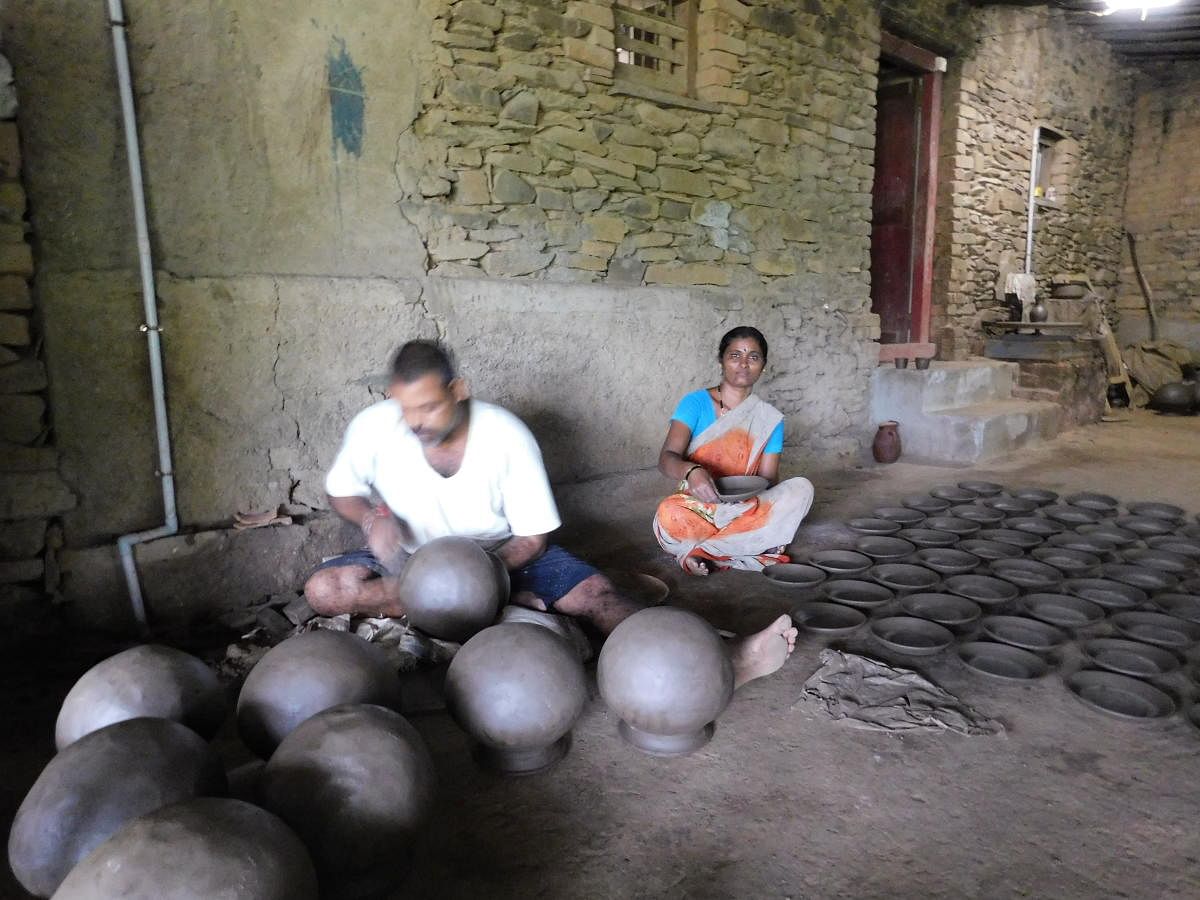

Only a few decades ago, earthen cookware was a great leveller as every household during those days cooked and served healthy and wholesome food in them. Steaming rice was served on a clay platter that smelt heavenly when blended with piping hot sambar, along with a dash of desi ghee that melted evenly. Veggies got cooked steadily on embers and fresh milk with a thick layer of cream boiled on a low flame on a mud-stove. Thick curd was set in a wide bowl, while tangy buttermilk was churned in a huge pitcher with the help of wooden churner.
All these and more added a distinctive aroma to the traditional culinary. The earthy flavour was a gastronomic delight to every hungry soul that relished the sumptuous spread.
After every use, the earthen cookware was soaked, cleaned, washed and dried. They were arranged near the fireplace in the kitchen so that the warmth emitted from the hearth kept them strong. The fragile cookware was handled with the utmost care and concern.
Down to earth
My love for earthen beauties took me to Mugad, a village in Dharwad district. Once famous for its earthenware, Mugad continues to boast of only a few die-hard potter families that continue to thrive in the face of adversity. As I navigated through the narrow lanes, I was directed to the humble abode of potter-brothers, Basappa and Shekhappa.
Alas! the pottery wheel that whirled non-stop in the houses of at least 30 earthen craftspeople in the village and produced lakhs of pots every year have all fallen silent. With modernity replacing traditional cooking, potters were hard hit as the demand for their products fell, pushing these families to absolute penury.
After their father Kariappa fell sick, the onus of continuing the family legacy rested on them, the brothers recollect. “We have decided to cling to pottery, which is our identity, life, breath and soul. For the past five decades, our family has not known anything beyond this, and we have no regrets,” they expressed.
“A pond located a little away is the only source of clay which keeps the fire in my kitchen burning. Much to our agony, the demand for earthenware had gone done during my father’s time. My father dedicated the first few months in a year preparing native roof tiles and the rest in crafting pitchers, pots and pans.”
The courtyard and the backyard of Basappa’s house, assisted by his skilful wife, Ningamma, sport a variety of pots in different shapes and sizes and yet prosperity evades them.“During our heydays, I served as the president of the cooperative society we all artisans formed, while Mugad market busted with a dedicated flow of customers. Mugad’s earthenware drew customers from Goa, Pune, Mumbai and Sangli too. We earned both name and fame,” Basappa said. As years passed by, concrete pots began replacing earthen pots.
Gradually, firewood, a major ingredient for potters to fire their products in the furnace, became inaccessible. This led to many sourcing wood from forests and the fringes began to shrink. Eventually, the Forest Department prohibited pruning of trees. All these developments forced many to shift from their family occupation. Bogged down with various problems, the cooperative society too was dissolved. From 30 families, the number of potters trickled down to three.
Hamstrung
Undeterred, Basappa began sourcing waste wood from timber yards and farm waste from fields, as an alternative to firewood. The only silver lining for the brothers now is switching to mechanical wheel from manual, aided by the solar power, which has eased their work. Solar power has lit up their homes too.
Basappa and Ningamma, Shekappa and Gangamma try to be as innovative as possible with designs and shapes, and carry their ware over their head, trudging several miles in search of potential buyers. And the buyers, too, haggle with them over price. After all the toiling, what they take home is a few pence.
Fighting back her tears, Ningamma says, “It’s been ages since we last tasted profit. The cost of production has escalated and it is difficult for us to keep clinging to the occupation. We are landless artisans who do not enjoy any benefits. As durable and affordable goods give earthenware a stiff competition, only a handful of eco-conscious customers turn up in thin numbers to buy our ware.”
Until then, the brothers continue to stare into a grim, uncertain future, which is as hollow and dark as the empty pitchers they craft.
(Translated by Jyotsna P Dharwad)